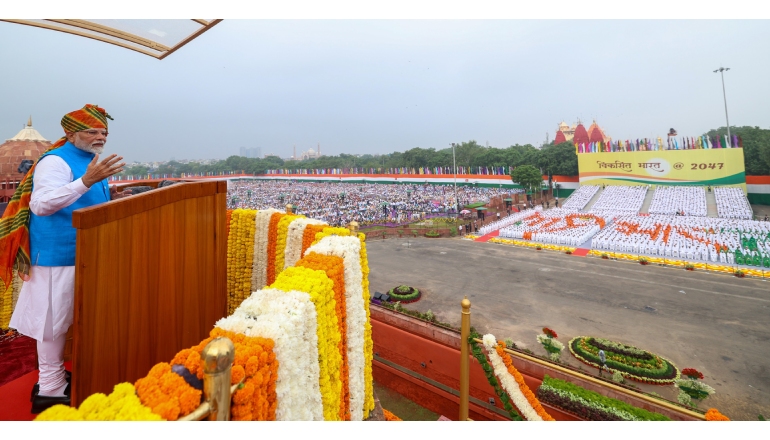President Draupadi Murmu’s address to the nation on 14 August and Prime Minister Narendra Modi’s speech today sent hope in the climate and sustainability universe. Both the leaders focused on climate justice as a key element in their respective Independence Day address to the nation.
Somewhere in the middle of her address, President Murmu touched upon two key things: justice for women and climate justice.
Incidentally, both are critical for a nation that aims to be a developed country while also fighting an increasing number of climate incidents.
She said, “Climate change has become a reality. It is all the more challenging for developing nations to change their economic paradigm. Yet, we have already made more progress in that direction than expected. India is proud to be at the forefront of humankind’s battle to save the planet from the worst effects of global warming. I also urge you all to make small but effective changes in your lifestyle and contribute to the cause of dealing with the challenge of climate change.”
She continued, “In our society, women have suffered from traditional prejudices. But I am glad to note that the Government has given equal importance to women’s welfare and women’s empowerment. Their participation in the labor force has increased. The most heartening development on this front has been the significant improvement in the sex ratio at birth. Nari Shakti Vandan Adhiniyam is aimed at ensuring real empowerment of women.”
The Prime Minister meanwhile spoke about the major reforms undertaken by the GOI.
In his speech, he highlighted the challenges faced by the nation in the wake of the recent natural calamities. “This year and for the past few years, due to natural calamity, our concerns have been mounting. Several people have lost their family members and property in natural calamity; nation too has suffered losses.”
Though the country has set 2070 as the net zero target, the PM indicated that the Railways will achieve zero emissions by 2030. This must be seen as a significant effort and a milestone in India’s climate action efforts. Interestingly, many Indian corporates and other entities have set 2050 as a net zero target.
The PM said, “We are moving towards a net-zero future. We have fulfilled the Paris accord target well before time. India has done what the G20 group could not do.”
However, the announcement of increasing non-renewable energy capacity to 500 GW was a dampener, given India’s progress in renewable energy. This shows that the country still prioritizes energy security. The good thing is that the country is focusing more on energy security to support the ‘Viksit Bhart 2047’ target.
Our take:
As WriteCanvas has consistently maintained, thermal energy will continue to remain the mainstay to meet the growing power demand, atleast for the next decade. We have regularly opined about the need for reforms, policies, and regulations that can accelerate climate action in India. And I hope PM’s mindset change remark also applies to climate as a segment.

